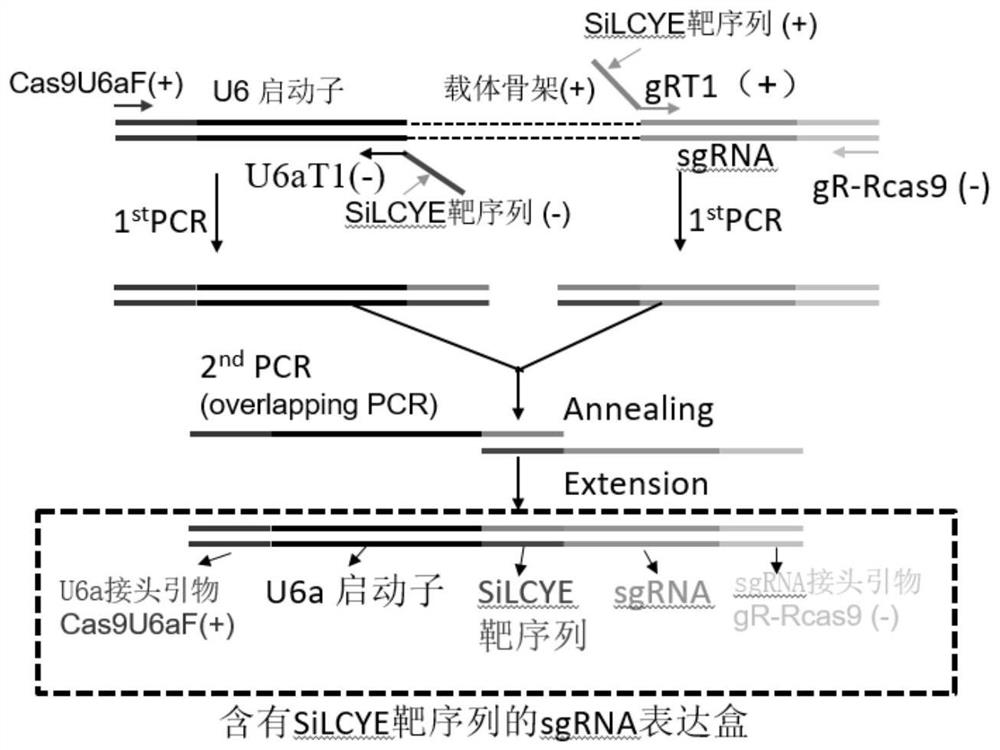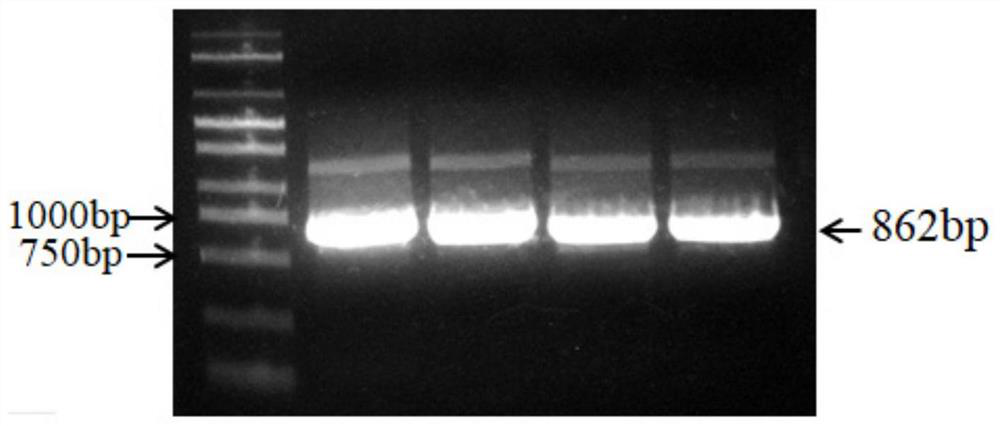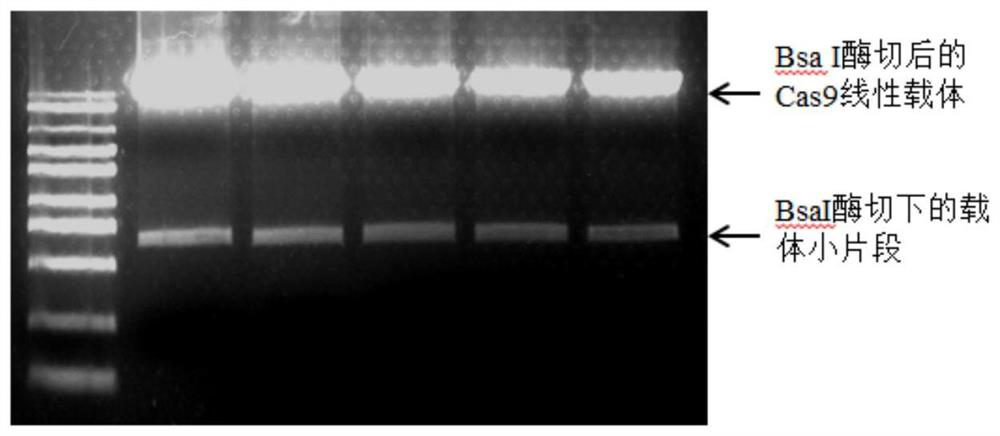Function and application of SiLCYE in regulating and controlling anabolism of millet carotenoids such as zeaxanthin
A technology of zeaxanthin and millet, applied in the direction of application, cells and enzymes modified by the introduction of foreign genetic material
- Summary
- Abstract
- Description
- Claims
- Application Information
AI Technical Summary
Problems solved by technology
Method used
Image
Examples
Embodiment 1
[0080] Example 1, SiLCYE gene editing target design
[0081] 1.1 Amino acid sequence, coding sequence and genome sequence of SiLCYE
[0082] The amino acid sequence of SiLCYE is shown in sequence 1 in the sequence listing, the coding gene of SiLCYE is shown in sequence 2 in the sequence listing, and the genome sequence of SiLCYE is shown in sequence 3 in the sequence listing. Through bioinformatics analysis, the SiLCYE genome has a total of 10 exons and 9 introns, and the full-length CDS is 1623bp.
[0083] 1.2. SiLCYE gene editing target design
[0084] According to the millet SiLCYE genome sequence, through the online target prediction website ( http: / / crispor.tefor.net / ) to generate a target list, and finally select the nucleotides 171-190 of sequence 3 in the sequence list, that is, 5'-GAAGCACGATGAGACGGCGG-3' as the target sequence.
Embodiment 2
[0085] Example 2, Construction of pYLCRISPR / Cas9Pubi-H-SiLCYE recombinant vector
[0086] 2.1. Construction of LacZ-U6a-sgRNA expression cassette
[0087] according to figure 1 The flowchart for constructing the sgRNA expression cassette shown in the figure shows the construction of the LacZ-U6a-sgRNA expression cassette containing the 20bp target sequence of the SiLCYE gene. (4): e0154027) and LacZ-U6a promoter adapter primer sequence Cas9U6aF (+), LacZ-U6a promoter sequence, 20bpSiLCYE target sequence, sgRNA sequence, sgRNA and the adapter primer sequence gR- of pYLCRISPR / Cas9Pubi-H binary vector Rcas9(-). The nucleotide sequence (862bp) of the expression cassette is shown as sequence 4 in the sequence listing.
[0088] The build process is as follows:
[0089] first as figure 1 Design 4 primers at the indicated position: Cas9U6aF(+), U6aSiLCYET1, gRSiLCYET1, gR-Rcas9(-), wherein the Cas9U6aF(+) primer contains the 6 nucleotide sequence of the Bsa I restriction site o...
Embodiment 3
[0106] Example 3. Obtainment of SiLCYE-positive transgenic millet and identification of edited strains
[0107] 3.1. Ci846 mature embryo callus culture and callus transformation mediated by pYLCRISPR / Cas9Pubi-H-SiLCYE Agrobacterium strain EHA105
[0108] The millet variety Ci846, which is intended to be transformed as a receptor material, was provided by the research group of Researcher Diao Xianmin of the Institute of Crop Science, Chinese Academy of Agricultural Sciences.
[0109] According to Biomed EHA105 Agrobacterium Competent Cell Reagent Manual (Product No. BC303-01), the recombinant vector pYLCRISPR / Cas9Pubi-H-SiLCYE was introduced into EHA105 competent cells to obtain pYLCRISPR / Cas9Pubi- Agrobacterium strains with H-SiLCYE plasmid.
[0110] The mature embryos of millet Ci846 were used as explants for callus induction culture, and the infection and transformation experiments of Agrobacterium strains containing pYLCRISPR / Cas9Pubi-H-SiLCYE plasmid were commissioned by th...
PUM
 Login to View More
Login to View More Abstract
Description
Claims
Application Information
 Login to View More
Login to View More - R&D
- Intellectual Property
- Life Sciences
- Materials
- Tech Scout
- Unparalleled Data Quality
- Higher Quality Content
- 60% Fewer Hallucinations
Browse by: Latest US Patents, China's latest patents, Technical Efficacy Thesaurus, Application Domain, Technology Topic, Popular Technical Reports.
© 2025 PatSnap. All rights reserved.Legal|Privacy policy|Modern Slavery Act Transparency Statement|Sitemap|About US| Contact US: help@patsnap.com



